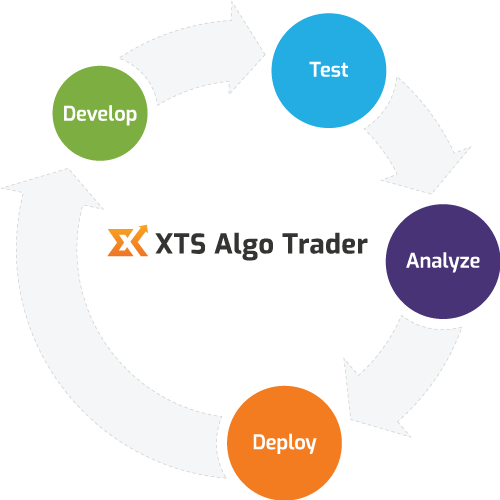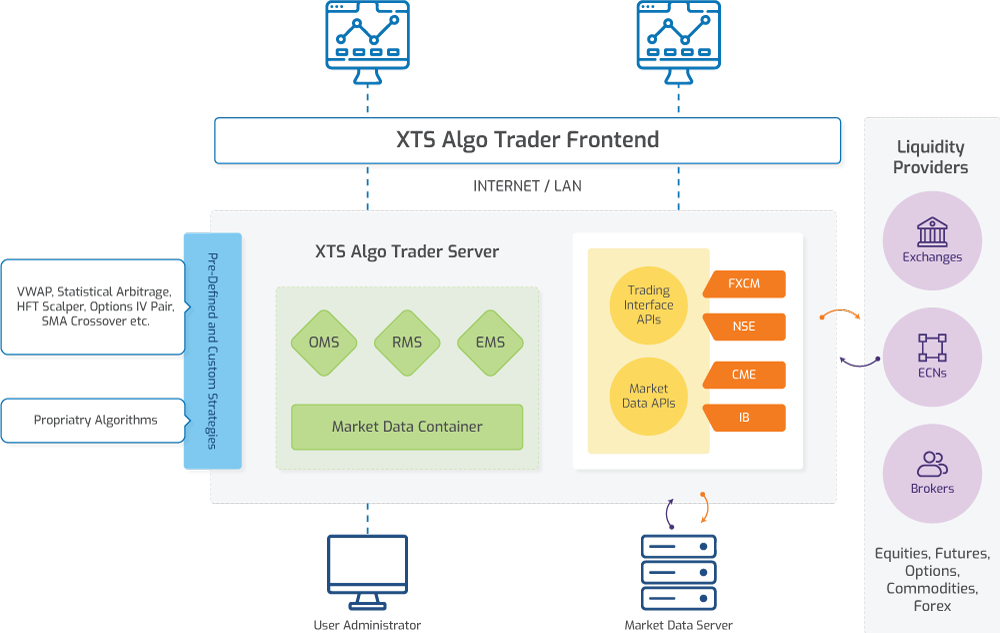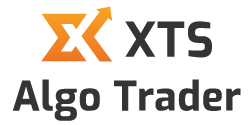
XTS Algo Trader is next generation, most powerful and flexible algorithmic trading platform for quantitative hedge funds, investment bank, prop desk and professional quant developers for rapid development, testing and deployment of simple to sophisticated trading strategies into constantly evolving financial marketplace. It is designed to increase trading execution efficiency and profitability by capturing alpha.
XTS Algo Trader combines powerful features such as, multi-asset trading across multiple liquidity venues from your algorithmic trading strategies with comprehensive risk management system to ensure safety and soundness of your financial systems. It manages end-to-end automated trading lifecycle including market data feed, risk management, order management system, order routing and deliver exceptional trading experience with extensive range of advance features.

Have Trading Ideas?
Build Your Strategy using XTS
Debug and Test with live and simulated market data
Fine tune your strategy, Calibrate parameter and retest
Execute (Go Live)

Symphony Fintech is innovative technology firm with more than 10 years of experience in delivering cross asset front-to-back trading solutions for the financial market participants...
Global Multi Exchange, Multi
Asset Trading
High performance and Low
latency architecture
Powerful Strategy Development
OEMS and Risk Management

Develop and Run any type
strategies models
Third Party Decision system
Integration
Customization Front End
Full source code options for Financial Institutions
and Hedge Fund
Algorithmic trading strategies that are being successfully modeled and in production used today using XTS Algo Trader
HFT scalping strategy employs a very short holding period position based on certain alpha predicting small price movement and exit based on profit target and stop loss. It includes exploiting various price gaps caused by bid/ask spreads and order flows.
Quote based strategies to exploit short lived inefficiency in market i.e. Box spread, Conversion-Reversal, Butterfly Spread, Volatility spread, Cash and Carry Arbitrage in Futures etc
Implied Volatility (IV) based Bidding. This Algorithm allows bidding on Option Instrument based on user defined Implied Volatility (IV) and hedges it in Equity/Future/Options
Arbitrage opportunities across related instrument in different exchanges.
Mean Reversal strategy that identifies medium and long term opportunities used to exploit financial markets that are out of equilibrium and assumes prices will eventually adjust to and reflect the fair value with certain predictability. It mostly uses pair trading and uses the concept of equilibrium of oscillation of long and short positions and applies a set of rules to spot inefficiencies and produce return.
Profit situation arising from pricing inefficiencies between securities that is identified through mathematical and statistical modelling techniques.
Index arbitrage: Trading Index against a basket of its component stocks.
Market making refers broadly to trading strategies that seek to profit by providing liquidity to other traders while avoiding accumulating a large net position in a stock. In the simplest terms, a market maker helps facilitate the execution of a trade by providing a continuous bid-and-ask market for a futures or options contract to any interested party, hoping to make a profit by exploiting the difference between the two prices, known as the spread. Intuitively, a market maker wishes to buy and sell equal volumes of the instrument (or commodity), and thus rarely or never accumulate a large net position, and profit from the difference between the selling and buying prices. Market making often requires placing and cancelling lot of orders and BlitzTrader SmartOrder command enables quant developer to effectively place new, modify and cancel orders at desired price level
Mechanical Trading Strategies: A lot of best traders use some kind of mechanical rules based on technical analysis in their trading strategies. The trader should follow these rules exactly without hesitation or emotions and rules utilising multiple technical indicators to help them to identify price trends and future trading opportunities. Technical analysis is a form of trading strategy that looks purely at historical price action to determine current and future price trends. Examples: Fibonacci analysis, trend, momentum, volatility and volume based strategies using indicators like SMA, MACD, RSI stochastic, Bollinger Band, ATR, Standard Deviation etc
Several investment management companies have specialized in exploiting news driven trading strategies that would affect the future sock price. Event driven hedge funds need to be on constant alert on news and company press releases as any potential profits could be “arbitraged” away after a short period after the event has taken place. Many news agency providers also provides low latency machine readable news feed that can be directly used in XTS Algo Trader trading strategy to exploit sudden price movement.
Such corporate news events are for example mergers, restructuring, litigation or bankruptcy, product announcements, examples for market news are announcements of economic indicators (unemployment rate, PMIs, etc.) or interest rate changes
Benchmark-Driven strategies seek to minimize slippage relative to client chosen benchmark to improve execution performance while minimizing market impact cost. Algorithms will attempt to find the best available price in the market, which often depends on minimising market impact by concealing a large order as far as possible. Techniques to achieve that often involve slicing an order into many smaller chunks. Examples: VWAP, TWAP, POV etc.
The execution can focus multi-venue in order to cope with the fragmentation of modern financial market and the system is designed to trade on any available source of liquidity